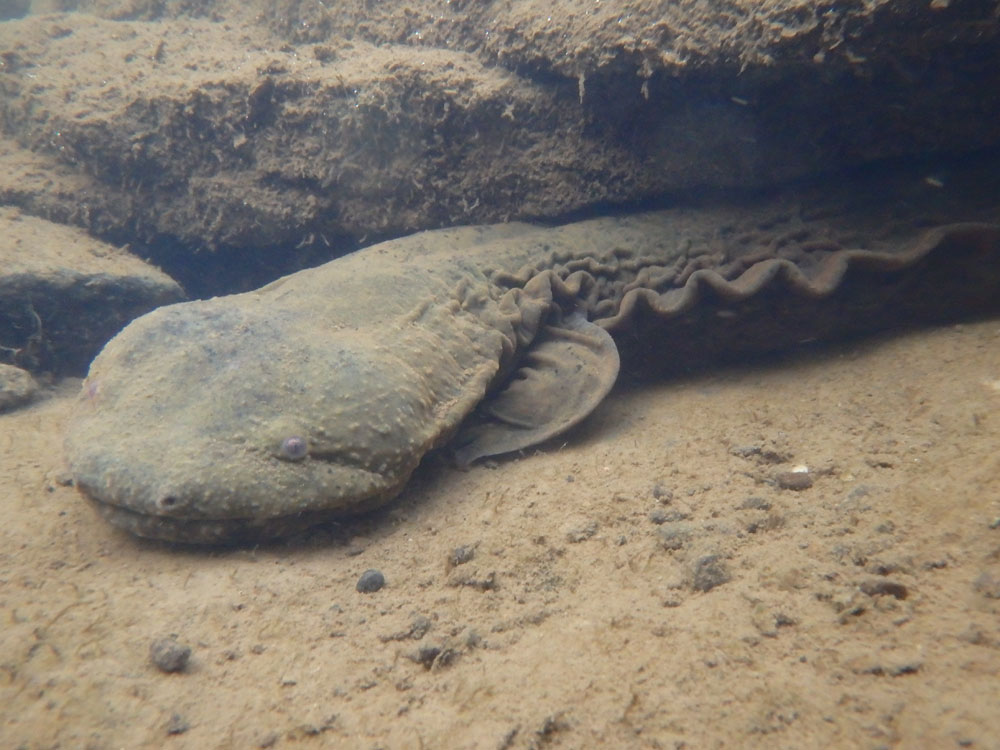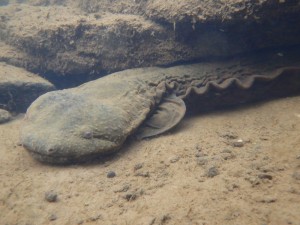Ohio’s Hellbender Population Set Up for Success

 COLUMBUS, OH – A partnership aimed at increasing the population of Ohio’s largest salamander is celebrating the successful release of nearly 200 animals into the wild, according to the Ohio Department of Natural Resources (ODNR). The Toledo Zoo, Columbus Zoo and Aquarium and ODNR recently collaborated on the release of 189 captive-reared eastern hellbenders into three eastern Ohio watersheds.
COLUMBUS, OH – A partnership aimed at increasing the population of Ohio’s largest salamander is celebrating the successful release of nearly 200 animals into the wild, according to the Ohio Department of Natural Resources (ODNR). The Toledo Zoo, Columbus Zoo and Aquarium and ODNR recently collaborated on the release of 189 captive-reared eastern hellbenders into three eastern Ohio watersheds.
Hellbender releases this summer consisted of 45 animals from eggs that were collected in 2011 and reared at the Columbus Zoo, as well as 144 salamanders from eggs collected in 2012 and 2013 that were reared at the Toledo Zoo. More than 400 hellbenders continue to be reared at the zoos, and additional egg collections are planned in 2014. The conservation plan aims to establish multiple, self-sustaining hellbender populations in at least six Ohio watersheds. The hellbender is an important part of Ohio’s natural heritage, and the presence of this species is a clear indicator of healthy habitats, which include clean water.
The eastern hellbender is the largest salamander in Ohio and one of the largest living amphibians in the world. A large adult can exceed 2 feet and weigh more than 2 pounds. Hellbenders are completely aquatic and spend their lives under large rocks in clean streams where they feed on crawfish and other aquatic organisms. A hellbender’s wrinkled skin is specially adapted to absorb oxygen through the water, while their flattened body allows them to squeeze into tight spots under rocks.
Researchers across the hellbender’s range, which extends from New York and Pennsylvania to Georgia and Missouri, have noted drastic declines in populations. In Ohio, surveys of hellbender populations have found an 82 percent decline in relative abundance compared to previous surveys conducted in the mid-1980s.
In response to the decreasing numbers, members of the Ohio Hellbender Partnership are working to implement the Ohio Conservation Plan for the hellbender. The plan is a virtual blueprint for the recovery of the species, and includes rearing larval hellbenders from eggs collected in the wild in the safety of secure facilities at partner zoos. Hellbenders spend up to four years at the zoo, and then are placed back in the wild to bolster populations. Researchers estimate that mortality for wild newborn hellbenders is greater than 90 percent, but under the care of zookeepers this can be reduced to less than 10 percent.
Other partners are working to restore the hellbender’s stream habitat. Habitat improvement includes planting trees, preventing stream bank erosion and reducing agricultural runoff into streams. Partners include the ODNR Division of Wildlife, the Partners for Fish and Wildlife Program, the Belmont and Jefferson County Soil and Water Conservation Districts and local land trusts.






